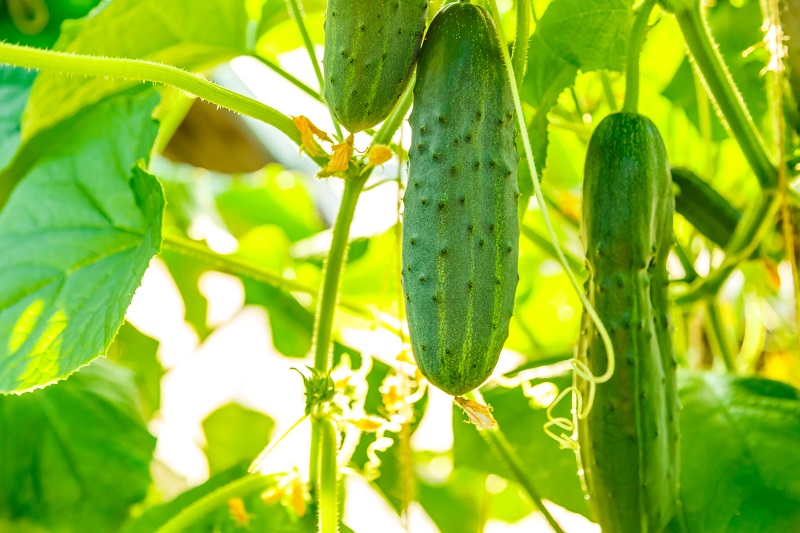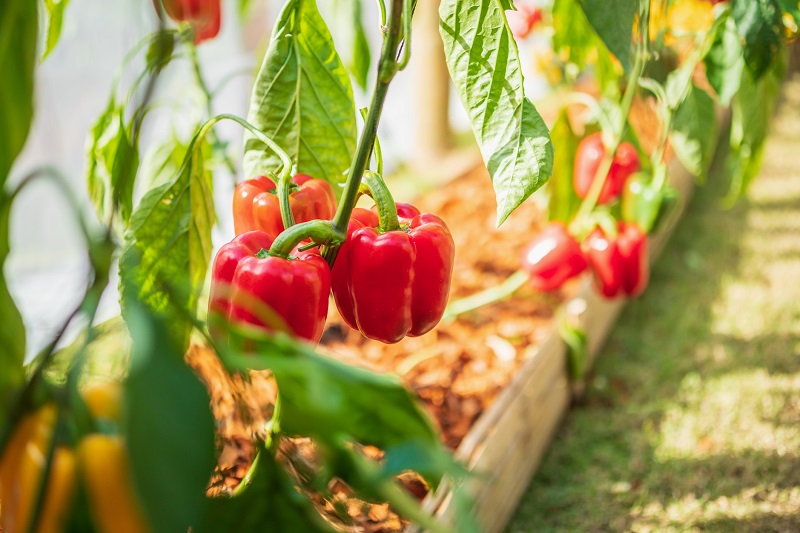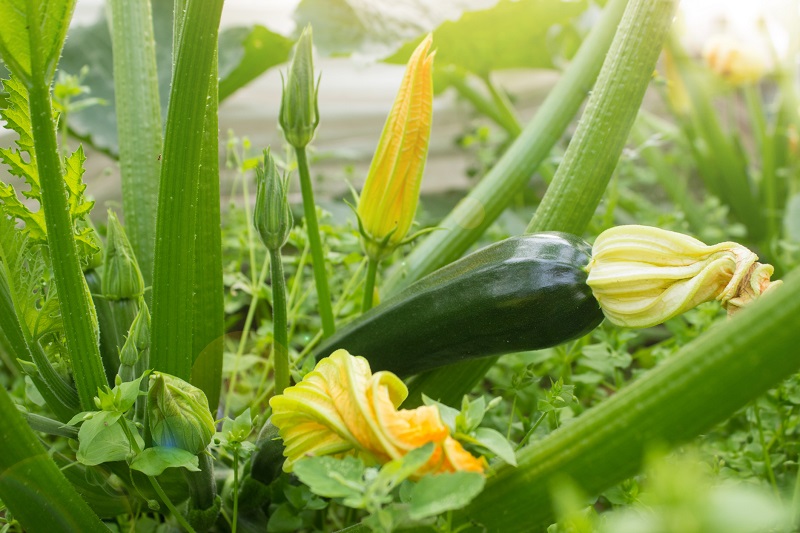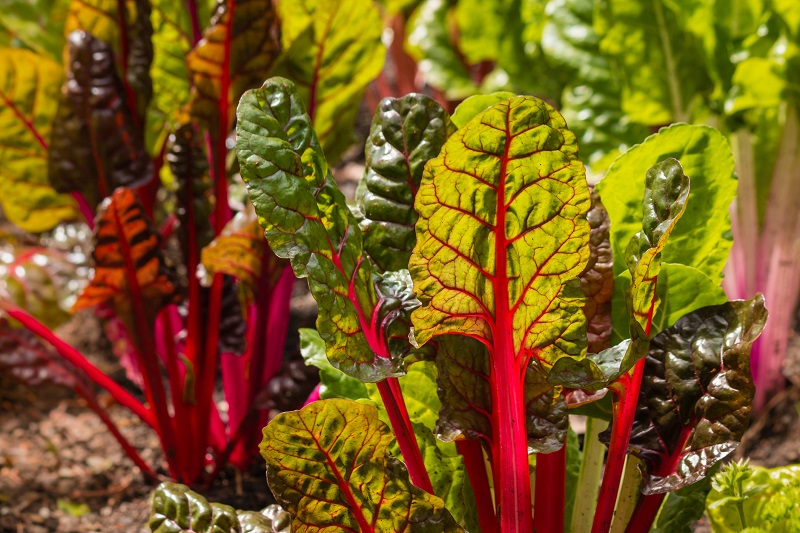Gardening is just about the perfect activity for summer. You burn calories from gently bending and stretching as you care for the plants. If you get too hot, you can just relax and watch as the bees and butterflies go about their business. Gardening rewards you with the freshest and most nutritious produce possible, and you get a little satisfaction from raising it yourself.
Summer is the prime growing season for many popular vegetables. These non-starchy veggies are so good for you that you can eat as much of them as you want and you will stay on track with your weight loss. The five vegetables covered here are so versatile that you can enjoy them in different ways each and every day.
Don’t worry if you don’t have a large plot or any land at all. You can grow all of these veggies in pots on a patio or balcony. In fact, growing in pots saves you the trouble of weeding. Just bear in mind that plants in containers need more frequent watering than those in the ground. Most garden vegetables need about eight to 10 hours of direct sun each day, so choose a spot that gets a lot of light, especially during the long summer afternoons and evenings.
You can start these plants from seeds. But if you’re new to gardening, just buy little seedlings at the local nursery and save yourself a couple of weeks of waiting to see if the seeds come up. The time to plant them in your outdoor garden or container is after nighttime temperatures stay above 55 degrees F. Keep the soil in your garden or pots consistently moist for about two weeks after planting as the seedlings begin to establish roots. After that, water the plants only when the soil feels dry when you push your finger into it. Give the plants organic fertilizer every two weeks but be sure to follow the package instructions so you don’t overfeed the plants, which is as bad as overeating is for you.
Ready to grow? Here are five easy vegetables to grow that thrive in the summer and give you a steady harvest of fresh produce all season long.
1. Tomatoes

Why: America’s favorite garden vegetable begins ripening its juicy fruit in midsummer and the tomatoes keep coming until the fall. Tomatoes are high in vitamin C and potassium. The compound that gives them their red color is lycopene, an antioxidant that has been shown to promote eye health.
Best varieties: For best flavor, choose “beefsteak” types, such as Brandywine or Big Boy. Celebrity bears lots of medium-size tomatoes and is exceptionally problem-free. You’ll get handfuls of Sweet Million cherry tomatoes every day. If you’re planting in pots, try Patio or Tom Thumb, which stay compact but still yield plenty of ripe fruit.
Keys to success: Tomatoes grow on vines that flop over and lie on the ground after they reach about 1 foot tall. Keep your tomatoes upright by placing them in cages or tying them to sturdy posts.
2. Cucumbers

Why: Cucumbers start ripening their fruit in early summer and keep producing for weeks on end. Cukes are low in calories while having a high fiber and water content. They are an excellent source of vitamin K, a nutrient that promotes healthy bones.
Best varieties: The familiar long, green types with smooth skins are known as “garden” cucumbers. County Fair is a popular variety because it is productive and resistant to problems. Pickling or Kirby cucumbers are smaller, crunchier and mostly seedless. Boston Pickling cucumber is widely grown because it is very reliable. You won’t often find sweet, juicy and yellow Lemon cucumbers in stores, but you can grow them yourself. When planting in pots, look for “bush” type cucumbers.
Keys to success: Cucumbers can be prone to mildew (white or dark spots on the leaves) so avoid getting water on the foliage. Also, allow for room between the plants so air can circulate around them, which dries off excess moisture and reduces the likelihood of fungi.
3. Peppers

Why: Both sweet and hot peppers are easy and fun to grow yourself. They come in bright colors and a wide range of shapes and tastes. Peppers are high in vitamins A and C. Peppers are crunchy and delicious when eaten raw in salads or with dips. You can use peppers to add flavor to many cooked dishes including chili, omelets and quesadillas.
Best varieties: Go with Ace to get a steady supply of sweet red bell peppers. Jimmy Nardello gives you sweet, long frying peppers. Jalapenos are mildly hot. Cayenne turns up the heat, while Ghost will light a fire. Let your taste buds decide. Mohawk Patio is perfect for pots because it stays just 12 inches tall but bears lots of orange sweet peppers.
Keys to success: All types of peppers start out green and then ripen to their full color of red, orange or yellow. At that point, they have their best flavor and are most nutritious. You can sample one or two of the green peppers but be patient until the majority of them ripen and turn color and your peppers will be even more satisfying.
4. Zucchini

Why: Green summer squash, or zucchini, is one of the most versatile veggies. You can eat it raw, grill or sauté it, bake with it, or turn it into “noodles” with a spiralizer. There are so many healthy zucchini recipes that are perfect for summer! Summer squash is low in calories, high in fiber and a good source of vitamin C and potassium.
Best varieties: Summer Fordhook is the classic long, smooth-skinned zucchini we all know and love. Cocozelle is an Italian variety that foodies prefer. Eight Ball bears round and tender summer squash that are ideal for stuffing. For container growing, look for Emerald Delight, which stays compact.
Keys to success: Zucchini have the best flavor and texture when they’re about 6 inches long, so check on them every day and pick them before they get too big. Zucchini plants can produce a lot of fruit quickly. Share the extras with friends, neighbors or a local food bank.
5. Swiss Chard

Why: Most greens wilt in the hot summer sun, but chard keeps on growing strong. Chard has tender leaves with firm stalks and it tastes like spinach. You can eat it fresh in salads and sandwiches or in frittatas, stir-fries and other cooked dishes. Chard is high in vitamin A and minerals such as magnesium and potassium. Chard brings color to your garden and plate. The leaves are medium to dark green and the stalks can be red, pink, yellow or white.
Best varieties: Bright Lights has stalks that are various shades of those colors all on one plant. Rhubarb chard has red veins in the leaves as well as the stalks. For a pretty container, plant any variety of chard along with basil and chives.
Keys to success: You can snip a few leaves as needed and the plant will keep growing. Fertilize the plant a day or two after harvesting so it has the nutrients it needs to replace the leaves.
Learn more in our story on Home Gardening Tips for Beginners! >

